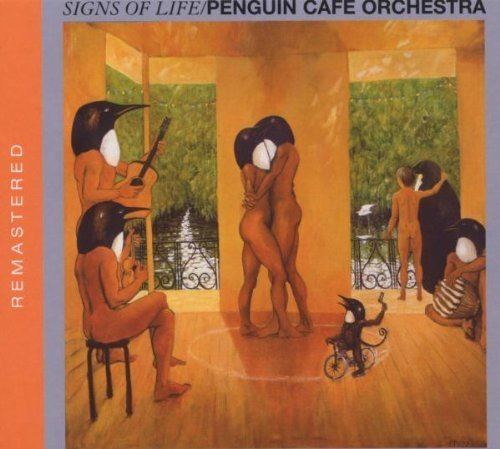In music perpetuum mobile (Latin, English pronunciation /pəːˌpɛtjʊəm ˈməʊbɪleɪ, ˈməʊbɪli), moto perpetuo (Italian), mouvement perpétuel (French), 'movimento perpétuo' (Portuguese) movimiento perpetuo (Spanish), literally meaning "perpetual motion", has two distinct meanings: pieces of music, or parts of pieces, characterised by a continuous steady stream of notes, usually at a rapid tempo, or whole pieces, or large parts of pieces, which are to be played repeatedly, often an indefinite number of times.
As a separate piece, a "Perpetuum Mobile" can be defined as a composition where (a large part of) the piece is intended to be repeated an (often not specified) number of times, without the "motion" of the melody being halted when a repeat begins. Canons are often intended to be performed in a moto perpetuo fashion (which, in that case, can be called canon perpetuus).
In some cases the repeats of a "perpetuum mobile" piece are at a different pitch (while a modulation or a chord progression occurs during the repeatable part): some of the riddle canons of Bach's Das Musikalische Opfer are examples of this particular kind of Perpetuum Mobile/Canon Perpetuus.
Perpetuum mobile as a genre of separate musical compositions was at the height of its popularity by the end of the 19th century. Such pieces would often be performed as virtuoso encores, in some cases increasing the tempo along the repeats.
"Perpetuum mobile" pieces of both kinds include:
The finale of Haydn's String Quartet No. 53 in D major ("The Lark"), Op. 64, No. 5.Beethoven's 22nd piano sonata, and large segments of the finales of his Tempest and Appassionata sonatas.The second of Franz Schubert's Impromptus, D. 899.The finale of Carl Maria von Weber's Piano Sonata No. 1Charles-Valentin Alkan's Le chemin de fer, op. 27, for piano.Felix Mendelssohn's Perpetuum mobile, op. 119, for piano.Ottokar Novacek's Perpetuum Mobile, for violin and piano.Nicolò Paganini's Moto perpetuo Op. 11 (N° 6) for violin. most often performed with a rather insignificant obbligato accompaniment; when scored for wind instruments it becomes a virtuoso challenge of circular breathing and double-tonguing. Béla Fleck has performed it on the banjo.Nikolai Rimsky-Korsakov's Flight of the Bumblebee, an interlude for his opera The Tale of Tsar Saltan.Johann Strauss II's Perpetuum Mobile: musikalischer Scherz for orchestra.Robert Schumann's Hasche-Mann from Kinderszenen.Bedřich Smetana's Album Leaf No.3 from Six Album Leaves Op. 2.Mouvement (from Images, Set 1), a 1905 piano composition by Claude Debussy.The second movement of Prokofiev's Piano Concerto No. 2 (1912–1913).Trois Mouvements perpétuels, a 1918 piano composition by Francis Poulenc.The end of the opera Wozzeck, Act III Scene 5, by Alban Berg (1914–1924).The last movement of Maurice Ravel's Sonata for Violin and Piano (1923–1927).The last movement of the Violin Concerto by Samuel Barber (1939).The last movement of Béla Bartók's Concerto for Orchestra (1943).Prelude no. 2 in A minor from 24 Preludes and Fugues by Dmitri Shostakovich (1950–1951).The final movement of Benjamin Britten's Cello Sonata in C Major Op. 65 (1960). Also the third movement of his Suite for Violin and Piano Op. 6 (1935), the finale of his first solo cello suite (1964) and the penultimate movement of his third cello suite (1972).Arvo Pärt's orchestral Perpetuum mobile (1963)."Perpetuum Mobile" by Michael Roberts, used as the startup music for Thames Television and earlier ABC Television "Perpetuum Mobile for pedals alone" a showpiece for Organ by Wilhelm Middelschulte.'Fracture', a moto perpetuo piece based on the whole-tone scale composed by guitarist Robert Fripp and included on the 1974 album 'Starless and Bible Black'.John Adams's Short Ride in a Fast Machine (1986)."Perpetuum Mobile" by Penguin Cafe Orchestra (1987)."Equus" by Eric Whitacre (2000)The album Perpetuum Mobile by the German avant garde group Einstürzende Neubauten has some examples of the concept.Neil Peart's drum solo "Moto perpetuo" on Rush's 2011 album Time Machine 2011: Live in Cleveland"Fade Into Darkness" (previously known as "Penguin") by Avicii (Tim Berg) (2010) - inspired by Penguin Cafe Orchestra's "Perpetuum Mobile""Collide" by Leona Lewis and Avicii, based on "Perpetuum Mobile" by Penguin Cafe Orchestra, and "Penguin (Fade Into Darkness)" by Avicii
